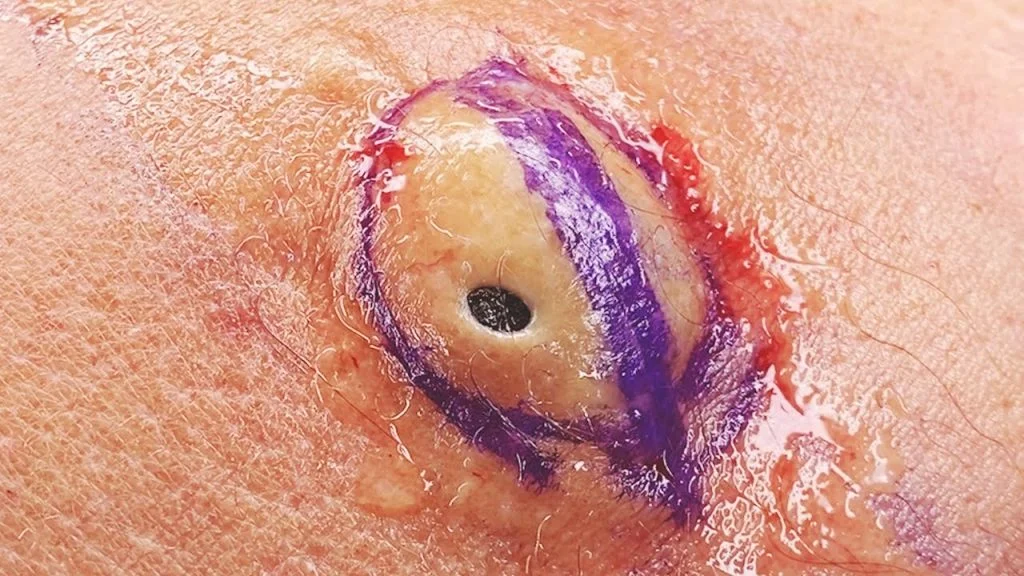
Facial tumors are rare but not unheard of, and their impact on an individual’s life can be profound. In particular, a recent case involving a 16-year-old who had a massive tumor removed from their face has captured attention for both the medical challenges it posed and the bravery of the young individual involved.
This case serves as a reminder of the incredible advances in medical treatments and the resilience required when dealing with such difficult health issues. The journey from diagnosis to removal of a large facial tumor was not only an emotional and physical challenge but also a significant moment in the medical field, as the procedure required skill, precision, and an understanding of both the physical and psychological effects that come with treating such a condition.
What Is a Facial Tumor?
A facial tumor refers to any growth that appears on or under the skin of the face. Tumors can be benign (non-cancerous) or malignant (cancerous), and they come in various shapes, sizes, and levels of severity. In most cases, facial tumors are non-cancerous, but even these can cause significant issues, including discomfort, cosmetic concerns, and emotional distress.
The causes of facial tumors vary. They could be the result of genetics, a pre-existing medical condition, or even external factors like injury or infection. Depending on the type and location, some tumors may require urgent treatment, while others can be monitored for changes over time.
The 16-Year-Old’s Journey with a Massive Face Tumor
In this particular case, a 16-year-old teenager lived with a massive facial tumor that grew steadily over time. Initially, the tumor may have been small, and its growth may not have been alarming. However, as the tumor began to grow, it started to cause more significant physical and emotional problems.
The growth was large enough to affect the teenager’s appearance and even their ability to perform regular daily functions. Tumors on the face, especially when they are large, can lead to a range of issues, including difficulty with speech, eating, and even breathing. The psychological toll can also be significant, with patients often feeling self-conscious about their appearance. For many teenagers, facing these kinds of challenges can be overwhelming.
The decision to undergo surgery to remove the tumor was not an easy one. Surgery of this nature requires careful planning and a team of specialists to ensure that the tumor is removed safely without affecting surrounding tissues or structures.
Types of Tumor Removal Procedures

Depending on the size, location, and nature of the tumor, there are several surgical options available for tumor removal. In the case of the 16-year-old, the medical team carefully assessed the tumor and determined that a surgical intervention was necessary to improve the patient’s quality of life.
Here are some of the most common types of procedures used to remove facial tumors:
1. Curettage
Curettage is a procedure in which a sharp surgical instrument is used to scrape away the tumor tissue. This method is typically used for small tumors that are located closer to the surface of the skin. The procedure is less invasive and generally has a quicker recovery time.
In this case, the size of the tumor may have required a more extensive procedure, but curettage is still a valuable option for smaller growths.
2. Excision
Excision is the most common method of tumor removal. In this procedure, the surgeon makes an incision into the skin, removes the tumor, and then closes the wound with stitches. Excision is often preferred for tumors that are deeper within the skin or when the tumor is larger in size.
For a massive tumor like the one in this case, excision would be the most appropriate method. Surgeons would ensure that the tumor is entirely removed and that any potential cancerous cells are also addressed, if applicable.
3. Cryosurgery
Cryosurgery involves using liquid nitrogen to freeze and destroy the tumor tissue. This method is typically used for smaller tumors and can be very effective for benign growths. The freezing process destroys the tumor’s cells, causing it to shrivel and fall away over time
Although cryosurgery is less invasive than excision, it would likely not have been a viable option for the massive tumor that required removal in this case.
The Surgical Process for Removing a Large Tumor
The removal of a large facial tumor involves a step-by-step surgical process, typically under general anesthesia. For the 16-year-old patient, the surgical team would have followed a carefully planned procedure to ensure the safest possible outcome.
- Pre-Surgery Assessment: Before the surgery, the medical team would have performed a comprehensive evaluation, including imaging studies (like MRIs or CT scans) to assess the size, location, and extent of the tumor. This assessment helps the surgeon determine how best to approach the removal.
- Anesthesia: Given the size and complexity of the tumor, general anesthesia would be used to ensure that the patient is comfortable and pain-free during the procedure.
- Incision and Removal: Once the area is numbed, the surgeon would make a careful incision to access the tumor. For a massive tumor, this step requires precision to avoid damaging surrounding structures such as nerves, blood vessels, and muscles.
- Post-Removal Reconstruction: After the tumor is removed, the surgeon may need to perform some reconstruction to ensure that the face’s appearance and function are preserved. This could include stitching the skin or even using grafts to repair any damage.
- Recovery and Aftercare: Following surgery, the patient would likely experience some bruising and swelling, which is a normal part of the healing process. The recovery time can vary based on the extent of the surgery, but most patients can return to normal activities within a few weeks. However, for more complex cases, such as this one, the recovery could take longer.
Emotional Impact of Tumor Removal
While the physical aspects of removing a large tumor are challenging, the emotional and psychological effects of such a surgery are equally significant. For teenagers, particularly, the impact of a facial tumor can have lasting effects on self-esteem and body image.
The 16-year-old who underwent the surgery not only had to deal with the physical discomfort of the tumor but also the emotional toll it took on their confidence and mental health. Faced with a disfigurement that others might notice, many teenagers struggle with feelings of insecurity, isolation, and depression. The decision to have the tumor removed likely brought a sense of relief, but it also marked the beginning of a difficult healing journey—both physically and emotionally.
Having a strong support system of family, friends, and healthcare professionals is crucial in helping individuals cope with the emotional aspects of tumor removal. It’s important for patients to have access to mental health resources, including counseling or therapy, to help navigate their feelings during recovery.
Recovery and Life After Surgery
For the 16-year-old who had the tumor removed, recovery may have been a difficult but ultimately rewarding process. The medical team would have provided detailed aftercare instructions to ensure that the area healed properly and that the risk of infection or complications was minimized.
As the swelling subsided and the stitches were removed, the young patient would likely have seen significant improvements in both their appearance and health. While there may still be some emotional healing to undergo, the physical impact of the tumor would gradually fade.
In many cases, people who undergo facial tumor removal surgery experience a renewed sense of confidence and relief. The knowledge that they no longer have to deal with the growth can be incredibly empowering. It allows them to move forward with a new sense of self and a brighter outlook on life.
Conclusion
The story of the 16-year-old who had a massive facial tumor removed is a testament to the incredible strides being made in medical science and the strength and resilience of those who face such difficult challenges. Tumor removal surgeries, particularly on the face, are complex and require highly skilled medical teams, but they offer hope and healing for many individuals who deal with these conditions.
For the young patient, the surgery marks the beginning of a new chapter. While the road to recovery may not be easy, the journey toward regaining one’s health and confidence is an inspiring one. With the right care and support, individuals like this 16-year-old can overcome even the most challenging medical obstacles and live fuller, happier lives.






